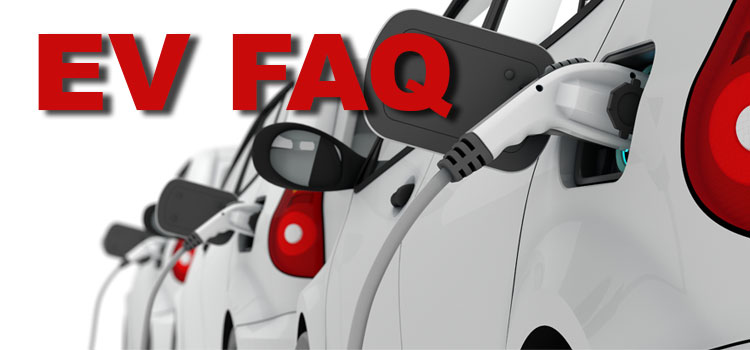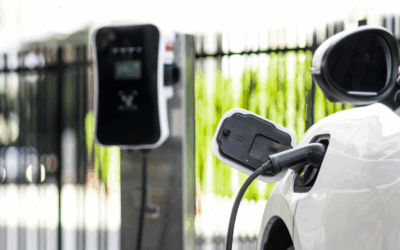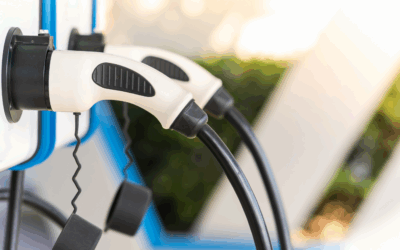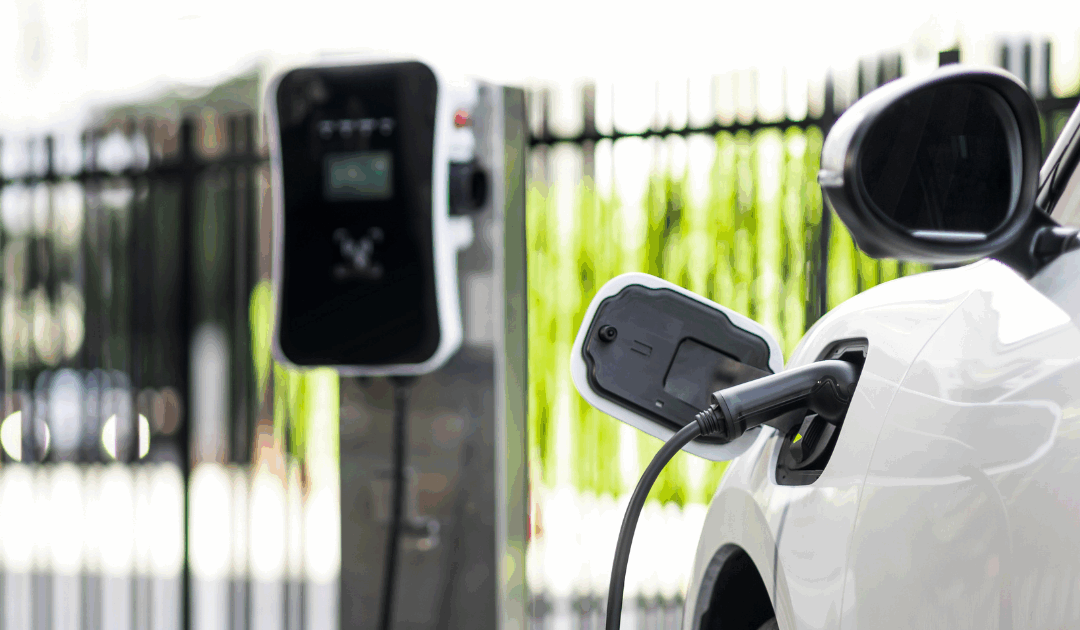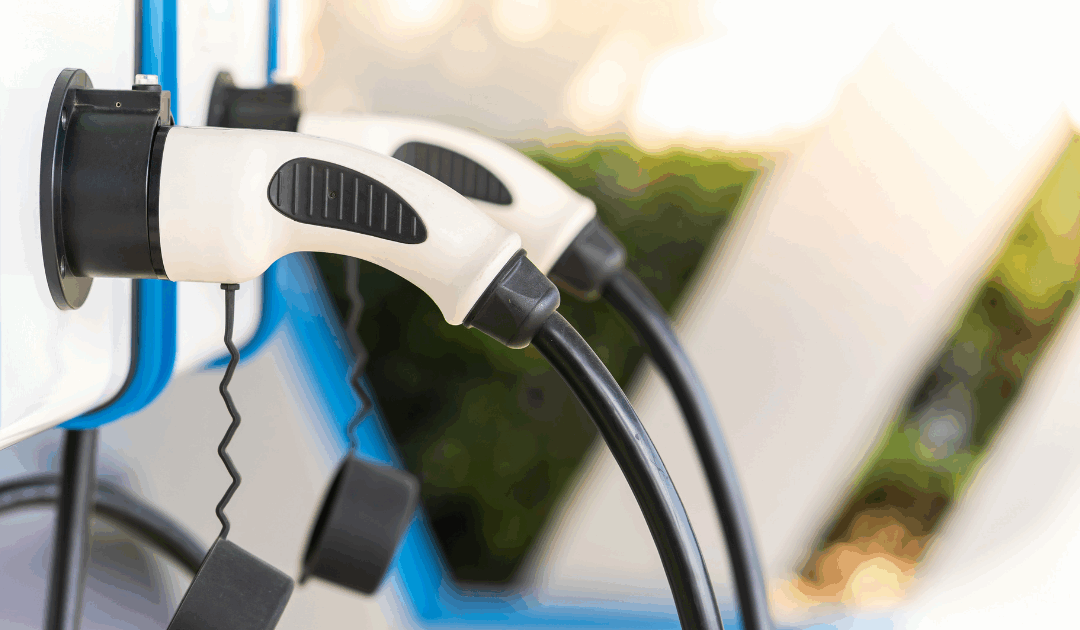At REACH, we are huge fans of electric vehicles. We have had the pleasure of producing many events, virtual and in-person, to spread the EV love. During these events, we get a lot of questions about technology, environmental consciousness, and cost (among others) – and it’s clear that many people who aren’t able to make it to our events have these questions, too! We’ve put together a list of our most sought after answers to make it easy to learn all about EVs.
This list includes a lot of different topics, but it is by no means the answer to every question! We’d love to help you on your EV journey, whether you’re just curious or you’re interested in bringing an EV home. Reach out to us if you have questions of your own!
What’s the difference between a battery electric vehicle and a plug-in hybrid vehicle?

Test Drive an EV!
Battery electric vehicles (or BEVs) run exclusively on battery power while plug-in hybrids (or PHEVs) run on a combination of a traditional gasoline engine and battery power. BEVs usually have electric ranges of 120-300 miles while PHEVs have electric ranges of 20-40 miles. Both kinds of EVs plug in to connect to power, so Priuses do not count as electric vehicles.
Will running the AC or heater affect the range on an EV?
Yes, running the AC or heater will generally decrease the range of EVs (though this happens in gas vehicles too!), particularly in extreme temperatures. However, even with this loss of range, most EVs are more than capable of making the typical commute of 35 miles. BEVs are affected more because heating and cooling is powered from the same battery used to move the car. Unlike gas vehicles, which have a lot of waste heat, EVs are super-efficient and have very little wasted energy. However, there’s been some new technology tested recently that will help lift the range!
Does an EV work similarly to a gasoline engine with spark plugs, pistons, etc?
PHEVs, since they have engines, do have a lot of similar parts, but since they’re used less due to the electric range, maintenance on those parts is decreased. BEVs are much simpler in the way they’re designed. Between the wheels is a mounted electric motor, with no transmission, spark plugs, oil changes, or pistons. The electric motor connects either directly or indirectly to the driving wheels. Some vehicles have dual motor or all-wheel drive, which means there are multiple motors connected. There’s very low maintenance on these vehicles because of fewer parts, and brakes on EVs even wear less because of the nature of the regenerative motor.
 Are EVs really that “green” when you consider pollution output from power plants?
Are EVs really that “green” when you consider pollution output from power plants?
EVs, even when considering emissions from power plants, produce almost 50% less atmospheric pollutants and less carbon than gas vehicles. The carbon produced by EV fueling will shift even lower when you take into account the development of more renewable energy sources and the retiring of coal power. EVs are also zero emission vehicles at ground level, which is so important for public health.
Is it advisable to have a spare battery in case the electric goes out?
Though this seems like a good idea in theory, it’s not practical. An EV has the normal 12V auxiliary battery to boot up the EVs “computer,” but the battery pack that propels the car is very large, and you cannot keep a spare. A typical battery pack holds the same energy as an average house uses in two days, which is a lot of energy. You won’t need to keep a “spare” around.
Are lithium-ion batteries safe?
Lithium-ion batteries are used in many different electronic devices, from computers and cell phones to toys to EVs. Safety tests have become increasingly thorough in recent years, and, if used properly, lithium-ion batteries are quite reliable. There’s a lot of anxiety surrounding battery fires in the news, but these isolated incidents are highly publicized and don’t reflect the whole picture. As the EV Safety Advantage Report from CleanTechnica shows, EVs are not only safe, they also tend to be safer than gas powered vehicles. The probability of an EV catching fire is actually lower than cars with internal combustion engines. Also, each EV has colored tabs for firefighters to easily find and pull to disconnect the battery from the car, limiting the chances of it catching on fire in the event of a collision. So, don’t worry too much when manufacturers issue recalls – they’re just watching out that a rare incident isn’t repeated.
Aren’t EVs really expensive?
![]() Not at all! EVs have come a long way from being the big-ticket item on millionaires’ wish lists. Many of the EVs on the market are under $35k, and also include many national and state incentives for purchase. It’s possible to purchase a new EV for under $30k (and a new PHEV for under $20k), and that’s not counting the sheer number of wonderful used EVs for sale, which you can get for a fraction of the retail price. Also, to make way for new, exciting vehicles, prices for some EVs have been dropping drastically, like the 2022 Nissan Leaf, which will retail for just $27,400!
Not at all! EVs have come a long way from being the big-ticket item on millionaires’ wish lists. Many of the EVs on the market are under $35k, and also include many national and state incentives for purchase. It’s possible to purchase a new EV for under $30k (and a new PHEV for under $20k), and that’s not counting the sheer number of wonderful used EVs for sale, which you can get for a fraction of the retail price. Also, to make way for new, exciting vehicles, prices for some EVs have been dropping drastically, like the 2022 Nissan Leaf, which will retail for just $27,400!
What is the average maintenance cost of an EV?
AAA reports that electric vehicles have the lowest maintenance and repair costs at 6.6 cents per mile. Plus, with an EV, there’s no oil to change and very few moving parts, which helps lower long-term maintenance costs!
How much will I receive on the federal tax credit?
On average, federal tax credits range from $2,500-$7,500 and are currently available on all makes except for Tesla and GM. The size of the credit depends on both the battery size and the number of models sold per manufacturer. Tesla and GM have already sold through the 200,000-model limit for this credit, which is why they no longer qualify. You can find out specifics on each vehicle on the Fuel Economy website.
How can I charge at home?
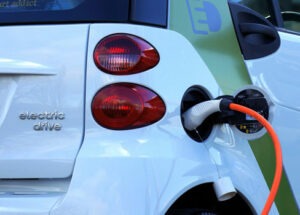 You can plug into a regular wall outlet, utilize an existing 240V outlet (appliance outlet similar to those used for household dryers), or install a Level 2 charger at your home. For installing a Level 2 charger, think of it like installing an appliance like a clothes dryer. We normally recommend a 40-amp breaker and a typical charger will be 32 amps and 240V. Again, similar to an electric dryer. Cost for a high quality Level 2 charger is roughly $500, and the cost for installation by an electrician will depend on your specific situation.
You can plug into a regular wall outlet, utilize an existing 240V outlet (appliance outlet similar to those used for household dryers), or install a Level 2 charger at your home. For installing a Level 2 charger, think of it like installing an appliance like a clothes dryer. We normally recommend a 40-amp breaker and a typical charger will be 32 amps and 240V. Again, similar to an electric dryer. Cost for a high quality Level 2 charger is roughly $500, and the cost for installation by an electrician will depend on your specific situation.
I live in an apartment building. How do I charge my EV?
There are EV charging stations rapidly popping up all across the country. For example, there are public charging stations in over 80 cities in Minnesota and over 70 in Missouri. Many of these stations are even free! These stations can be found along your usual route using apps like Plugshare, which will also tell you the price and availability of the chargers. With an EV, it’s possible (depending on the range of your vehicle) to go for a week or two before needing to recharge, which can be done easily at any of those public stations. Charging at home is just one way of many!
Why should I get an EV when my car works perfectly fine?

Happy Test Drive Participants
It’s up to you, and of course will only make sense when you are ready for a new vehicle, but we have seen many thousands of people affirm that they are never looking back now that they are driving electric. We recommend taking a good, hard look at what your needs are for a vehicle, your budget, and your charging options. As more EV models come on the market, chances are you’re going to find an electric vehicle that suits all of those requirements.
This is just the beginning, of course; with new technology being released so frequently, more questions are bound to come up. As always, you can reach out to us with any questions you have about EVs. We absolutely love talking about these fantastic vehicles, so if you’re interested in hosting an event with us with your community or your company, drop us a line! Let’s continue to drive change for good.

